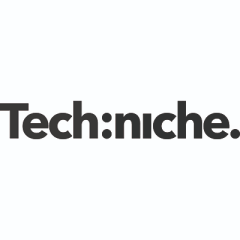We use Statseeker to monitor all the devices on our network. This includes:
- the network switches
- our gateways to the cloud
- our kiosks that are mounted throughout our building
- any other device we deem to be important
We want to know exactly when they go down.
In terms of network visibility, Statseeker can be very granular. We can tell it exactly where we want it to go and where we want it to check, or it can do an SNMP walk and find out where everything is. It's very detailed.
I find the speed of notification most valuable with using Statseeker. It's very quick with its notifications and the history is easily accessible. The history of outages, how long something's been down, how long something's been up. It has all that information there for us.
Now we know when things go down before we are called and told that something's not working. It allows us to fix something before our customer notices it's broken.
I would like the ability to update the dashboard. I would also like the ability to access via an API. Then I could produce a dashboard that my C level can understand. This is just so they can go and refresh whenever they want to and see what things look like.
The stability of Statseeker is rock solid.
Statseeker would scale just fine. I just don't need it for more than what I have it for. It would scale great. It's fast, light, and thin.
We've done some WAN stuff, but are just getting into SDN.
When I had to use Statseeker technical support, it was good. However, in the beginning, the hours were a little strange because they're in Australia. For me on the East Coast, that's almost as far away as I could be.
Now since they're in San Diego as well, I'm sure it will be fine. I haven't had to call them for tech support very often.
I deployed Statseeker myself. It was a little complex. Someone was there to walk me through it. I would never have figured out how to do certain things if it wasn't for the person that was on the phone helping me. As long as they're providing that, then it's good.
It's probably $5K a year for the license.
SolarWinds was on my shortlist. I was almost in with them. I had done some free things using Splunk etc. Once I saw the demonstration in the Cisco lab, I knew this would be the easiest solution for me to deploy and use.
Overall, Statseeker has reduced the complexity of our network monitoring once it's installed. It provides a single pane of glass to go and look at a snapshot if anything's down or having any transitions, i.e. within the last hour or last twenty-four hours.
You can look at the data coordinator and if you see something red, you know something's wrong. If you don't see anything red, you know nothing's wrong. It just takes a glance. Even our help desk, if they're not in-network experienced, they can tell if something's down.
The single pane of glass for traditional and SDN affects our network management by making it easier to go to one place to be able to look at something as opposed to checking disparate systems all over the place.
For the workload of our network admin team, Statseeker has been a big help. Statseeker did reduce the amount of work they had to do. Even more, it focused them on what they had to do. Instead of chasing their tails, they could work on something that needed to be done.
For our network availability, we see things that are up and down, like if something needs to be replaced or fixed. Everything stays up longer now. We don't have a lot of SDN.
On a scale from one to ten, I would rate Statseeker a nine. I like it a lot, especially the area where you define reports and where you set up the email alerts.
The language used to formulate the email when you send it out could be done a little better. Statseeker gives you results that you can understand very quickly.
The biggest lesson that we've learned from using this solution is that you can't be everywhere at once, but this can.





